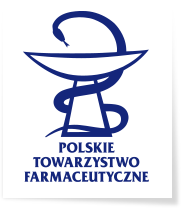Anna Magiera, Marta Jagiełło, Anna Marchelak
Męczennica cielista (Passiflora incarnata L.) jako element fitoterapii wybranych, wskazanych przez Europejską Agencję Leków, dolegliwości ośrodkowego układu nerwowego
2025-05-16
Przedmiot przeglądu. Choroby psychiczne to klinicznie znaczące zaburzenia w funkcjonowaniu poznawczym, emocjonalnym lub behawioralnym jednostki, które wiążą się z cierpieniem i/lub upośledzeniem ważnych obszarów życia. Do najczęstszych problemów natury psychicznej zaliczamy m.in. zaburzenia lękowe, których objawami są przede wszystkim uczucie napięcia nerwowego/psychicznego (stres), problemy żołądkowe, trudności ze snem czy uczucie zbliżającego się niebezpieczeństwa. Napięcie nerwowe oraz trudności z zasypianiem mogą przybierać łagodną formę i wówczas w ich terapii wspomagająco stosuje się substancje/ekstrakty roślinne. Jedną z częściej stosowanych roślin w celu łagodzenia objawów stresu psychicznego i trudności w zasypianiu jest męczennica cielista (Passiflora incarnata L.).
Cel przeglądu. Podsumowanie aktualnych danych naukowych i popularyzacja profesjonalnej wiedzy dotyczącej fitofarmakologii gatunku P. incarnata jako źródła substancji roślinnych, stosowanych w łagodzeniu wybranych, wymienianych przez Europejską Agencję Leków (EMA), schorzeń ośrodkowego układu nerwowego. W celu wprowadzenia do tematyki przedstawiono także informacje dotyczące aspektów botanicznych, biogeograficznych, fitochemicznych, zastosowania tradycyjnego oraz aktualnej pozycji we współczesnym lecznictwie europejskim substancji roślinnych pozyskiwanych z omawianego gatunku.
Materiały i metody. Przegląd piśmiennictwa został przeprowadzony z wykorzystaniem bazach danych: PubMed, Web of Science, Scopus i Google Scholar, z użyciem „Passiflora incarnata” jako deskryptora. W sumie wyodrębniono 46 artykułów naukowych, opublikowanych w latach 1974–2024. W przeglądzie uwzględniono również sześć stron internetowych, cztery zbiory monografii substancji roślinnych oraz cztery pozycje książkowe. Wzory chemiczne zaprezentowane w artykule przygotowano w oparciu o bazę danych SciFinder (CAS), zgodnie z wytycznymi American Chemical Society (ACS).
Wyniki i wnioski. Przegląd dostępnych danych naukowych pochodzących z badań klinicznych in vivo i in vitro wskazuje niewątpliwie na potencjał przetworów z nadziemnych części P. incarnata w leczeniu zaburzeń snu oraz w łagodzeniu lęku i stresu psychicznego. Wiele kwestii dotyczących właściwości terapeutycznych męczennicy cielistej pozostaje jednak niejasnych. Istnieje potrzeba przeprowadzenia rozszerzonych badań w zakresie farmakodynamiki, farmakokinetyki, bezpieczeństwa stosowania (m.in. badania toksyczności czy interakcji z lekami). Kluczowe wydaje się wskazanie, jakie związki czy grupy związków warunkują działanie nasenne, uspokajające i anksjolityczne oraz ustalenie dokładnych mechanizmów tych aktywności. Szczególnie pożądane byłyby dane wynikające z dobrze zaplanowanych badań klinicznych, wpisujących się w kryteria Dobrej Praktyki Klinicznej.
Hasła kluczowe: męczennica cielista, Passiflora incarnata, C-glikozydy flawonowe, alkaloidy indolowe, działanie nasenne, działanie uspokajające, działanie anksjolityczne.
© Farm Pol, 2024, 80(11): 767–785
Passionflower (Passiflora incarnata L.) as an element of phytotherapy for selected, indicated by the European Medicine Agency, central nervous system disorders
Object of review. Mental diseases are clinically significant disorders in an individual’s cognitive, emotional or behavioral functioning, associated with suffering and/or impairment of important areas of life. The most common mental diseases include, among others, anxiety disorders, the symptoms of which are primarily a feeling of nervous/mental tension (stress), stomach problems, difficulty sleeping, or a feeling of approaching danger. Nervous tension and difficulty falling asleep may take a mild form, and then in their therapy, plant substances/extracts are used as a support. One of the most commonly used plants to alleviate the symptoms of mental stress and difficulty falling asleep is passionflower (Passiflora incarnata L.).
Goal of the review. A summary of current scientific data and popularization of professional knowledge on phytopharmacology of the species P. incarnata as a source of plant substances used in alleviating selected diseases of the central nervous system, as pointed out by the European Medicines Agency (EMA). In order to introduce the subject, information on botanical, biogeographical, and phytochemical aspects, traditional use, and current position in contemporary European medicine of plant substances obtained from the species is also presented.
Material and methods. The literature search was conducted in the following databases: PubMed, Web of Science, Scopus, and Google Scholar, using the “Passiflora incarnata” descriptor. A total of 46 scientific articles published between 1974 and 2024 were identified. The review also included six websites, four collections of monographs on herbal substances and four books. The chemical formulas presented in the article were prepared based on the SciFinder (CAS) database by the American Chemical Society (ACS) guidelines.
Results and conclusions. A review of available scientific data from clinical, in vivo and in vitro studies undoubtedly indicates the potential of products from the aerial parts of P. incarnata in the treatment of sleep disorders and in relieving anxiety and mental stress. However, many issues regarding the therapeutic properties of passionflower remain unclear. There is a need to conduct extended studies in the field of pharmacodynamics, pharmacokinetics, and safety of use (including toxicity studies or drug interactions). It seems crucial to indicate which compounds or groups of compounds determine the hypnotic, sedative and anxiolytic effects and to determine the exact mechanisms of these activities. Data from well-designed clinical studies that meet the criteria of Good Clinical Practice would be particularly desirable.
Keywords: passionflower, Passiflora incarnata, flavone-C-glycosides, indole alkaloids, sleep-inducing effect, sedative effect, anxiolytic effect.
© Farm Pol, 2024, 80(11): 767–785
Męczennica cielista (Passiflora incarnata L.) jako element fitoterapii wybranych, wskazanych przez Europejską Agencję Leków, dolegliwości ośrodkowego układu nerwowego

